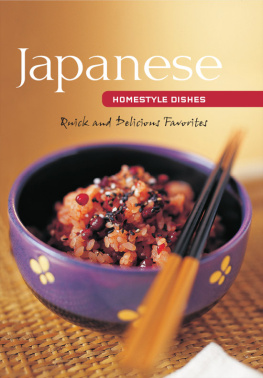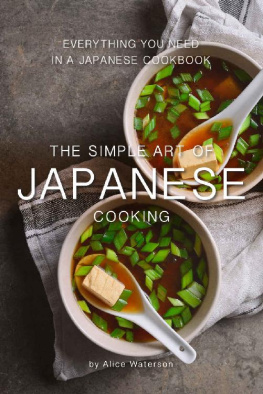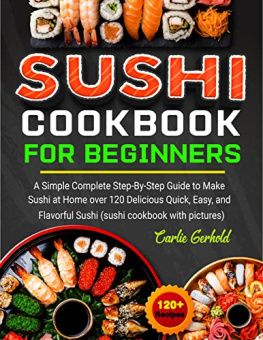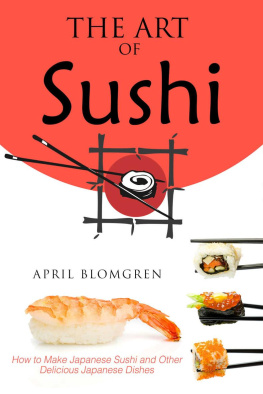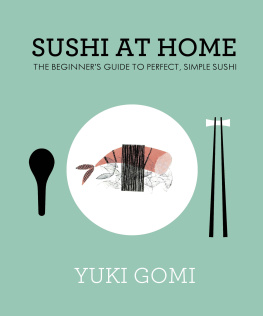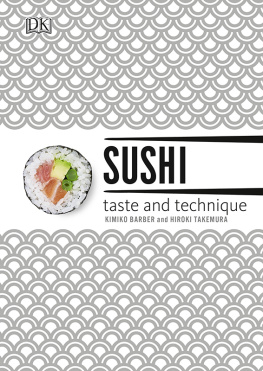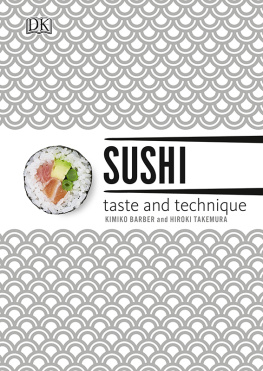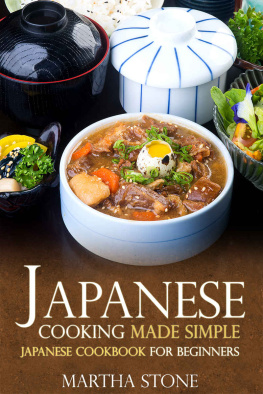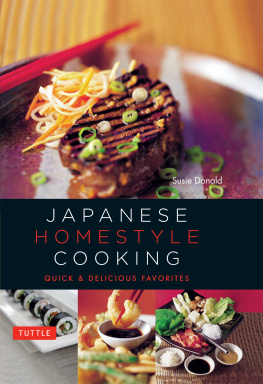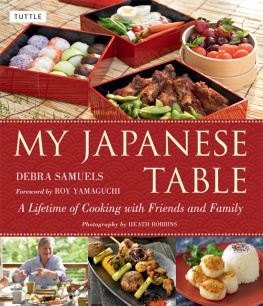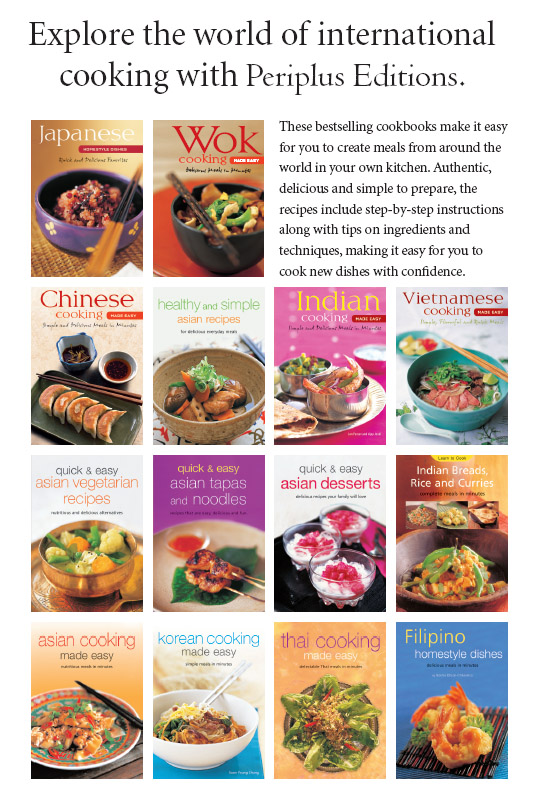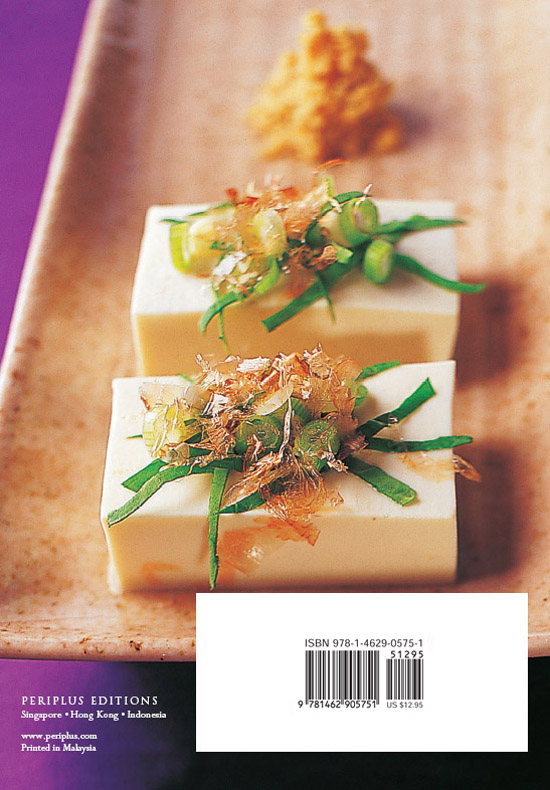Japanese Cooking Utensils
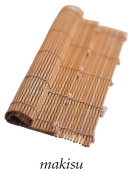 | Bamboo rolling mat ( makisu ): Widely available from Asian supermarkets and very inexpensive, this simple bamboo mat is a must-have utensil for rolling rice inside wrappers of seaweed and for rolling Japanese omelets.
Fish-bone tweezers ( hone nuki ): A pair of flat-ended tweezers is always present in a Japanese kitchen for deboning fish. |
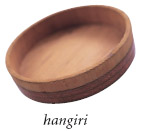 | Hotpot : A circular clay pot with a cover, used for cooking soups and stews. It can be placed directly over a gas flame or on an electric hotplate . Its main advantage is that it can be transferred to the table, where it will keep food hot during the meal. Substitute with an earthenware casserole pot or a Dutch oven.
|
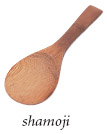 | Omelet pan : The Japanese omelet pan is usually square-shaped, about 1 inch (3 cm) deep, traditionally used for making sushi omelets. It can be substituted by a conventional round skillet about 10 inches (25 cm) in diameter; trim the sides of the omelet once it has been cooked to make it square.
Rice-cooling bowl ( hangiri ): This low, wide wooden bowl is used to cool cooked rice to give it the desired texture. The wider the bowl, the better to separate the rice grains.
|
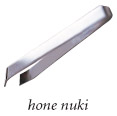 | Rice paddle ( shamoji ): The wooden rice scoop is used to spread cooked rice in the hangiri to cool. It traditionally represents domestic authority; whoever controls the shamoji in a Japanese household is in charge of the household affairs. |
Basic Japanese Ingredients
Agar-agar ( kanten ) is a gelatin made from seaweed and can be purchased as strands, sticks, flakes or powder. It is commonly used to thicken ice cream, jelly and pudding. It is readily available in the dried foods section.
Bamboo shoots must first be peeled, sliced and simmered for 30 minutes till tender, before use. If using canned bamboo shoots, it is best to boil them in water for 5 minutes before preparing. Canned bamboo shoots are available at most grocery stores, however, Chinese grocery stores often carry the fresh shoots packed in plastic pouches.
Burdock root is a long, skinny root enjoyed more for its texture than its flavor. After scraping off the skin, it should be put into water immediately to prevent discoloring. Also available canned. If available fresh, it has a rough, dark grey exterior. Only the roots are used for food.
Chinese olive vegetable is available as a pickle, served as an accompaniment to sushi.
Crab sticks are long, narrow cylinders of compressed seafood that are intended as an inexpensive substitute to king crab legs. Sold in some supermarkets and Japanese fish stores.

Daikon is a large white radish often eaten rawsliced or gratedwith sashimi and tempura. It is also pickled and sold in jars. Daikon is readily available in most supermarkets.
Dashi stock is the basic Japanese fish broth made from water, konbu (dried kelp) and bonito flakes (page 16); it is also available in an instant version in packets. This is very useful when a small amount of stock is required for sauces and as a seasoning.

Dried bonito flakes ( katsuo bushi ) are sold in plastic packs in Asian food stores; larger flakes are used to make Basic Dashi Stock (page 16) whereas the finer ones are used as a garnish.
Fish sauce is a fermented fish product made by layering fish and salt in large jars and then siphoning off the liquid. It is sold bottled and is a common seasoning in Thai and Vietnamese food.
Furikake is a topping for rice dishes; it comprises toasted seaweed, sesame seeds, ground dried fish and salt.
Ginger is widely used in Japanese recipes. Fresh ginger is always used instead of ground ginger, which has a very different taste. Young ginger is preferred as it is more tender and juicy. Pickled Ginger (page 40) is a popular accompaniment to sushi and sashimi.
Glutinous rice is a variety of rice that becomes very sticky when cooked. Mainly used in snacks, sweets and desserts. This rice must be washed thoroughly and soaked overnight before steaming. Also available as finely milled glutinous rice flour.

Green tea powder ( matcha ) is readily available from Asian food stores. It is great for making Green Tea Ice Cream (page 126).
Japanese cucumbers are small and do not have the coarse seeds or high water content of Western cucumbers. Substitute baby cucumbers or pickling gherkins.
Jellyfish is generally sold as salted or dried strips; it is commonly used in vinegared salads. It is sold in plastic packages in the refrigerator section of supermarkets.
Kanpyo are long, thin, dried gourd strips used in sushi and slow-cooked dishes; also for tying food together.

Konbu is a dried kelp in the form of flat black sheets with white powder on the surface, used to flavor Sushi Rice (pages 12-13) and Basic Dashi Stock (page 16). The kelps flavor infuses quickly in water, so do not wash it before cookingjust wipe to remove any dust or powder. Konbu is often removed before a dish is served.
Lotus roots are the thick tubers of the aquatic lotus plant. It has a crunchy, powdery taste in its raw form. It is sold either covered in mud in the vegetable section, or cleaned and wrapped in plastic packets in the refrigerator section of the supermarket. A good substitute is jicama or cauliflower.
Mirin is a sweet cooking wine made by mixing steamed glutinous rice with distilled spirits and sugar. The resulting liquid contains 12% to 14% alcohol. Avoid products labeled aji-mirin as they are a MSG-flavored version.
Miso is an important seasoning in Japana fermented paste made from soybeans and rice, wheat or barley. It is available in various colors and flavors, but the most common are red and white misos, which are used in miso soups. Readily available in Asian food stores.
Nori refers to the dried leaves of a seaweed called laver, and is generally sold in 8 x 7-in (20 x 17 cm) sheets and used for wrapping sushi or cut into strips as a garnish. Nori is best toasted to make it crisp and fragrant (see instructions on page 64). Also sold pretoasted and packed flat in bags.
Palm sugar varies in color from gold to dark brown and is made from the sap of the coconut or aren palm. It has a rich flavor similar to dark brown sugar, molasses or maple syrup, all of which make good substitutes. Available in Asian food stores in plastic containers or packets.

